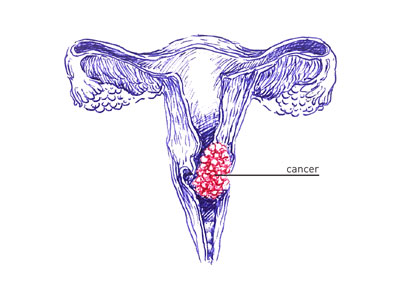The Reality of Cervical Cancer
Cervical cancer forms in the cells that line the cervix, which is the lower part of the uterus (womb). The cervix connects the body of the uterus to the vagina (birth canal).

Reality Check
Every year, 2,145 Malaysian women are diagnosed with cervical cancer. Cervical cancer is common among women in Malaysia and the 2nd most common cancer in women between 15 and 44 years of age.
Common Types of Cervical Cancer
SQUAMOUS CELL CARCINOMAS
Squamous cell carcinomas begin in the thin, flat cells that line the bottom of the cervix, or the exocervix. Known as the most common type of cervical cancer, it accounts for 80 to 90 percent of cervical cancers.
ADENOCARCINOMAS
Adenocarcinomas develop in the mucus-producing glandular cells that line the upper portion of the cervix, or the endocervix. This type of cancer makes up 10 to 20 percent of cervical cancers and seems to have become more common in the past 20 to 30 years.
Staging and Grading
Once you have been diagnosed positive for cancer after a biopsy test, the condition will be given a stage and grade. This vital information will help you and your healthcare team to choose the best treatment for you. The cancer stage will describe the size of the tumour and how far it has spread.
There are 4 stages of cervical cancer:
Stage 1
- Cancer cells are found in the cervix but it is not growing outside the uterus
- The cancer has not spread to nearby lymph nodes or distant sites
Stage 2
- The tumour has grown through the cervix and invaded the upper part of the vagina, but it hasn’t spread to the walls of the pelvis or the lower part of the vagina
- The cancer has not spread to nearby lymph nodes or distant sites
Stage 3
- The tumour has invaded the pelvic wall or the lower part of the vagina, and it may be blocking the ureters, which are tubes that carry urine from the kidneys to the bladder
- The cancer has not spread to the lymph nodes or distant sites
Stage 4
- At this advanced stage, the tumour has reached the bladder or rectum
- The cancer has also spread to other parts of the body, such as the lungs
There are 3 grades of cervical cancer:
Grade 1 – It is low grade, and the cancer cells look very much like normal cervical cells.
Grade 2 – It is an intermediate grade, and the cancer cells look slightly like normal cervical cells.
Grade 3 – It is high grade, and the cancer cells look very abnormal and are very unlike normal cervical cells.
WARNING SIGNS
- Unusual vaginal bleeding
- Abnormal vaginal discharge: may contain blood that occurs in between periods or menopause
- Pelvic pain
- Experiencing pain during sexual intercourse
THERE ARE RISK FACTORS THAT CAN'T BE CHANGED:
- Family history
Cervical Cancer Myths Vs Facts
Myth |
Fact |
| Cervical cancer cannot be prevented | Cervical cancer can be prevented, and it happens to be one of the most preventable cancers. A Pap test procedure could detect abnormal changes in the cells of your cervix, and if found, they can be monitored and treated so that the cancer never develops |
| I’ve had a hysterectomy so I don’t need Pap tests. | If you had a hysterectomy and you still have your cervix, it’s important to continue having regular Pap tests. |
| I have no symptoms therefore I do not need to get a Pap test. | Cervical cancer can be prevented without realising that there are any symptoms. |






